On July, 14 the spacecraft New Horizons made the closest flyby to Pluto, having passed only 12,500 kilometers (7,750 miles) above the dwarf planet on the outskirts of the solar system. The first transmitted photos have already led to some incredible discoveries.
Zoom into Pluto & discover mountains, seen during yesterday's @NASANewHorizons #PlutoFlyby: http://t.co/6QLXLxiW0o
https://t.co/toJQ0j7wB6— NASA (@NASA) July 15, 2015The world has been discussing a "heart" on the Pluto's surface but even more intriguing areas proved to lie just to the south-east of that. The images revealed by NASA's historic press conference on Wednesday showed mountains in the equatorial region which are as high as 3,500 meters (11,000 feet) and are about 100 million years old.
"This is one of the youngest surfaces we've ever seen in the solar system," said Jeff Moore of the New Horizons Geology, Geophysics and Imaging Team (GGI) at NASA's Ames Research Center in Moffett Field, California.
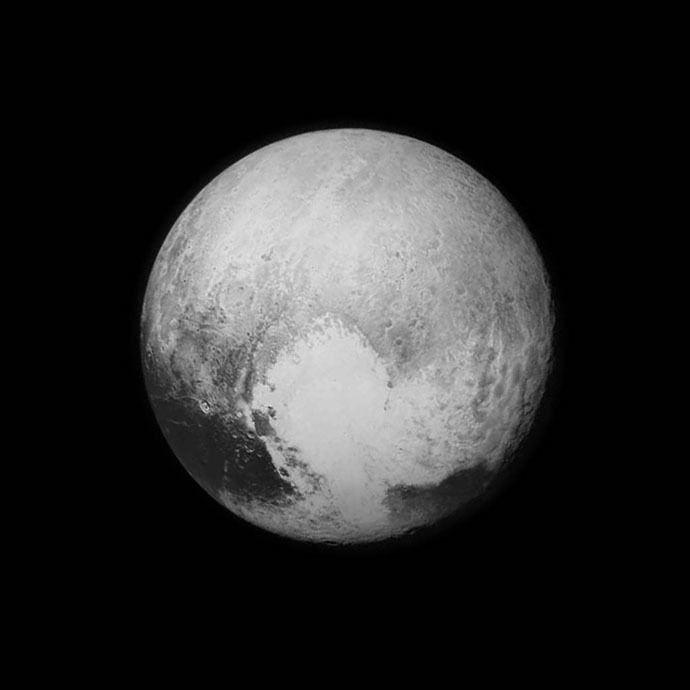
"This may cause us to rethink what powers geological activity on many other icy worlds," said GGI deputy team leader John Spencer.
Photos of Charon also provided astronomers with new material for further researches. The Pluto's satellite has a swath of cliffs and troughs - about 1,000 kilometers (600 miles) long. That may be the result of geological process on Charon.
Pluto's biggest satellite also has a canyon which is thought to be seven to nine km (four to six miles) deep.
Pluto's tiny potato-shaped moon Hydra emerges from shadows during @NASANewHorizons #PlutoFlyby http://t.co/z9xMO7Mci7 pic.twitter.com/0YdLOuGxep— NASA (@NASA) July 15, 2015The gathered data also reveal that Pluto's Charon is more cratered that the dwarf planet. Scientists are now scratching their heads for the reasons behind it.
"We're not quite sure yet. It's possible that more active internal geologic processes on Pluto are causing the surface to erode and recycle itself more rapidly," said Alan Stern New Horizon's principal investigator during a briefing on Wednesday.
"Or it's possible that atmospheric processes are covering up some of Pluto's craters. When we get more data back, we'll be able to piece this mystery together," he added.
Today, the @NASANewHorizons team is bringing what was previously a blurred point of light into focus. pic.twitter.com/AswUMZFxqd— NASA (@NASA) July 15, 2015Further photos are likely to provide the scientists with a deeper understanding of the formation of Pluto's four small satellites.
It took NASA's spacecraft more than nine years to reach Pluto after it was launched from Cape Canaveral on January, 19, 2006. It traveled more than three billion miles to reach the dwarf planet on the outskirts of our solar system which was discovered in 1930 and puzzled the scientists ever since.
After the Pluto flyby the New Horizons will travel further into a region of space known as the Kuiper belt, which lies beyond the planets and mostly contains frozen remnants from the Solar System's formation.
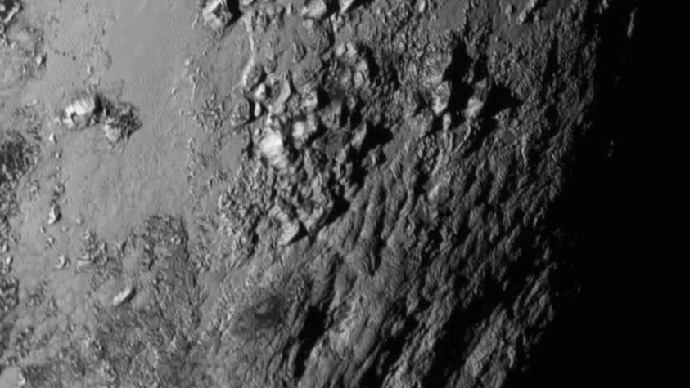

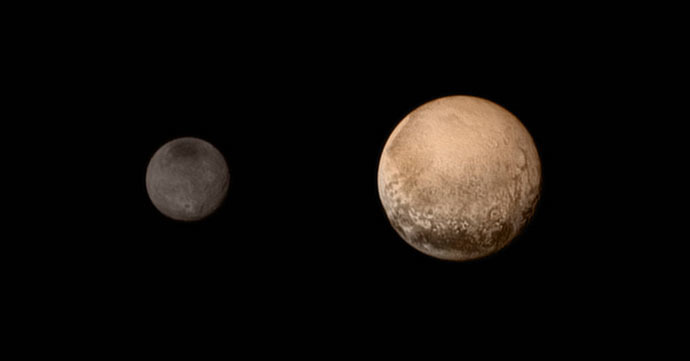
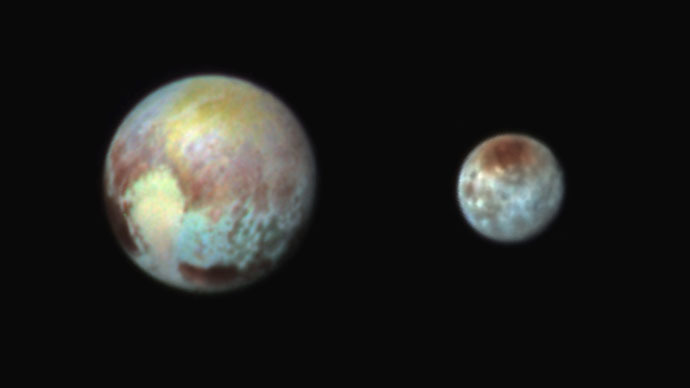

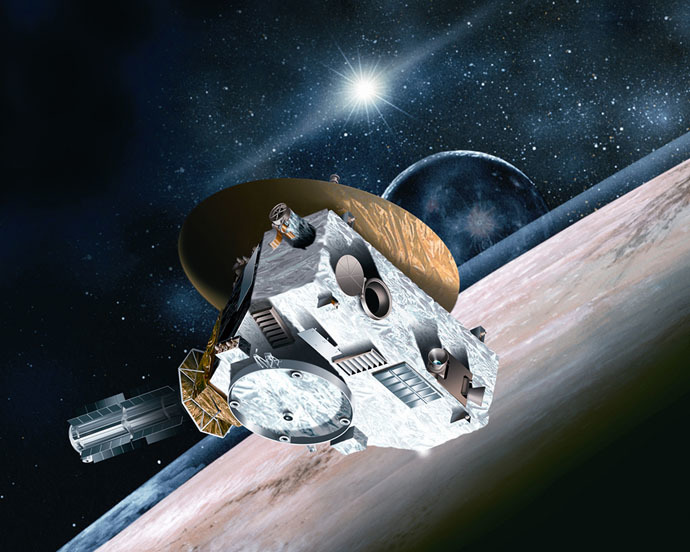



I bet NASA is scrutinizing the 'high-detail' photos for any Crypto Detail = alien bases, spacecraft or any artificial looking installations and happily using Photoshops relatively new feature [in recent years], called the Content Aware copy, fill, etc.. It can superbly fill entire valleys with believable detail copied from other parts of the photos.
NASA has the super large resolution photos for painting out Crypto Detail and publishing lower resolution, blurred imaged so its impossible to detect they have just made a whole section of the image disappear that was deemed NOT ALLOWED for public consumption. Photoshop is that good and its approx a 15 minute work to paint over anything alien so the falsified image looks like an award winning Grand Canyon photo.